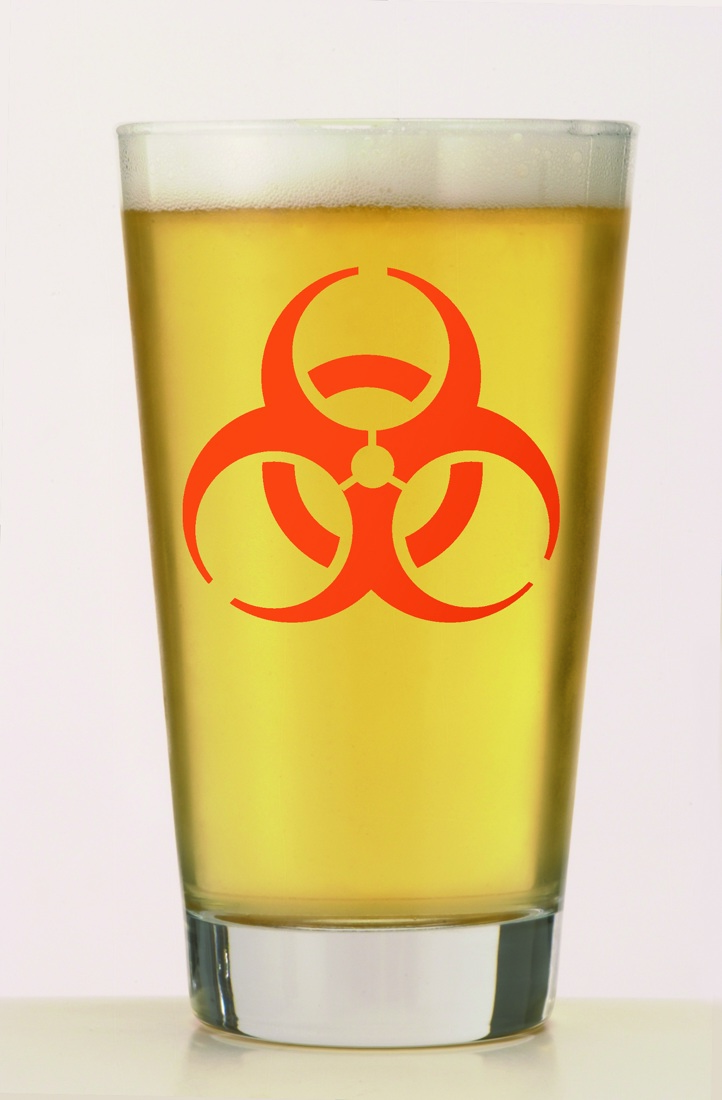I was talking to one of our newer brew club members a few weeks ago. He and his pals have been brewing like crazy fools (in the good sense), and they’ve really been trying to upgrade their beers in terms of recipes and techniques. For the most part, they’re making headway. But a taste of their newest brew revealed an unwelcome acidity, and the conversation turned to cleaning techniques. The next batch will reveal whether we’ve solved their problem.
Do one thing wrong and it doesn't matter that you got the other 99 right.

(Kinsley Dey)
It’s the weakest link theory. Do one thing wrong and it doesn’t matter that you got the other 99 right. A near-invisible film on the carboys, and you get pickle juice where that beautiful pale ale should be, no matter how much thriving, pedigreed yeast you pitched. It can be frustrating until that last piece of the puzzle snaps into place, and then all of a sudden, your beers become much better.
Most of the homebrew I get to taste is pretty wonderful, but among the ones that are not, certain problems are fairly common. I present a few of them here. Of course, at whatever level you brew, there are always improvements you can make. Double check these before you move on.
You can’t sanitize dirty stuff.
Even professional brewers wrestle with this, but you absolutely have to get a handle on it. If not, the rest of your efforts can be a big waste of time, and no great recipe, hand-cultured yeast, or cool label can make your beer drinkable.
Vessels and tools on the “hot side” of brewing, that is, before the wort is chilled and inoculated, need to be as clean as your food cooking equipment.
But in your fermenter, every batch of beer deposits a fresh coating onto the sides and bottom regardless of what material it’s made of. This protein film can be nearly invisible but it can harbor bacteria, which may turn your beer unpleasantly sour. Eventually, the film will build up enough to be noticed, but by this point you’re in deep trouble.
Scouring with a carboy brush will not remove this film and neither will bleach. Breweries use specialized cleaning chemicals, and you should, too. Caustic soda (lye) was long the cleaner of choice for breweries. Cheap and powerful, it does have drawbacks. It is extremely corrosive to copper, brass and aluminum, as well as organic materials like skin and eyes. For obvious reasons, protective gloves and eyewear are mandatory. It also must be used with very hot water. The other downside to caustic—and this is why I stopped using it—is that with hard water, it throws a chalky deposit that requires an acid to rinse away. It’s also getting harder to find. I don’t recommend it.
Oxygenated cleaners like Five Star PBW® (Powdered Brewery Wash) work extremely well even in cold water, are safe, and are available through homebrew supply channels. Just mix according to directions and watch the gunk come off. I swear that the first time I deep-cleaned my carboys, it looked like there were little bats flying around in there. Don’t forget your racking hoses, bottling wand, and anything else than comes in contact with your beer. Once it’s clean, then you can sanitize it.
Avoid stale liquid extract.
The ratio of water to solids in liquid extracts is perfect for a set of chemical reactions called “Maillard” or “non-enzymatic” browning. Proteins or their subcomponents combine with various sugars to create caramel and other flavors. It sounds good, and it’s the same type of reactions that occur in malt kilning and wort boiling, but the transformation in malt extract doesn’t add anything good. It tends to morph into something stale, harsh and cardboardy.
The watchword here is to buy a brand of liquid extract that sells well, or use dry extract, which is more shelf stable.










Excellent Article,
and I have reposted the Link to our club page
Thank You,
Roy